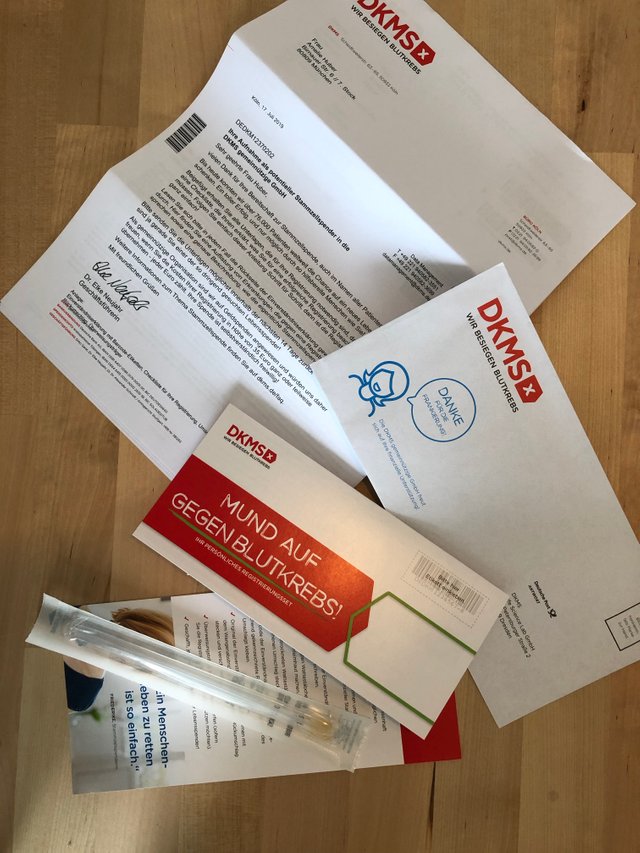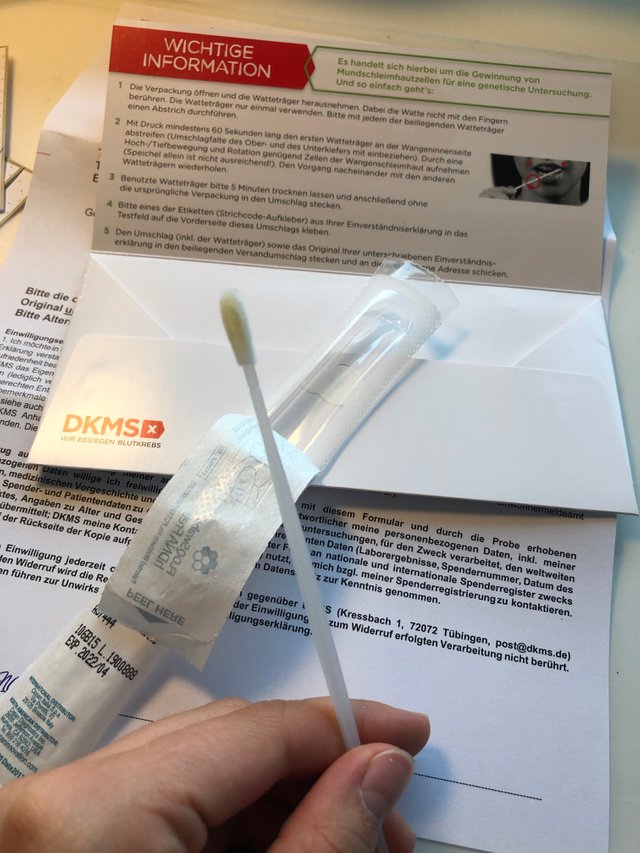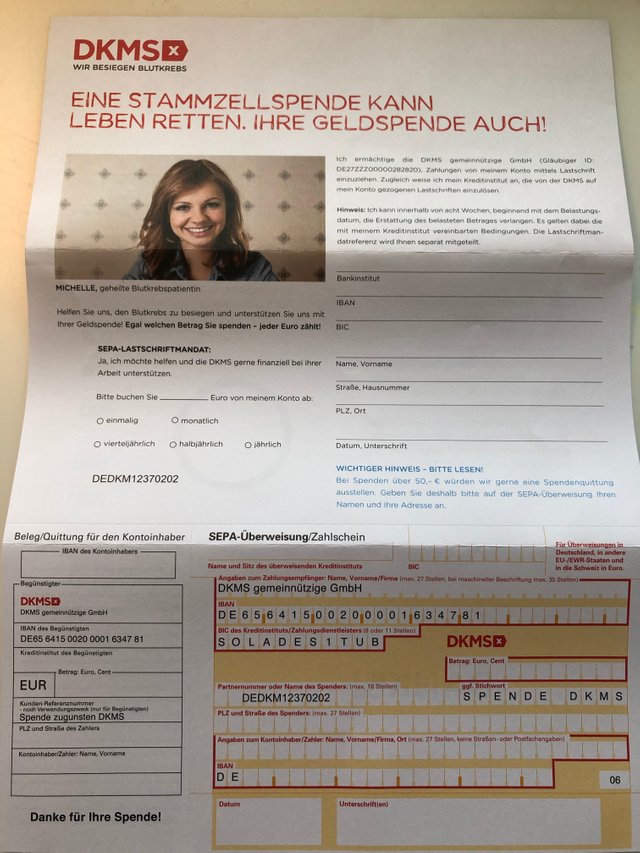How to become a stem cell donor?
More than 76.000 people in the world suffer from blood cancer. Even nowadays, where medical technology is very advanced, stem cell donations are necessary to help these patients.
Many foundations like DKMS in Germany (Deutsche Knochenmarkspenderdatei) try to help affected people by getting more people willing to help and register.
The process from registering to becoming a stem cell donor is really long and includes many steps. When you as a donor are willing to become a stem cell donor, following steps need to be taken:
- You as a donor have to visit the website of a foundation, e.g. DKMS and indicate your address so that they can send you a registration kit to your home address.
- A few days later the kit will arrive at your home with a lot of material to read.

- It also has a swab inside. The potential donor has to water the swab in the inside of his/her mouth and then send it back to the DKMS life science lab.

- In the envelope there is also a bank transfer form included as foundations are depending on donations - because every registration costs around 30€ and those organisations operate non-profit.

- After your stem cell type is defined, your data is added to the registry and from then on you can be contacted by the DKMS if you are needed as a donor for a patient worldwide.
- But this is not where the contact to DKMS stops – until you may become a donor. You get a Donor card and a letter every month, because DKMS wants to stay in touch with you
So, what is the Pain Point?
As you can see this process envelopes a lot of critical steps:
- The registration is all made by hand and is not digitalized at all. It takes a lot of time to enter the data into the system afterwards and a lot of paper is used.
- If a donor also decides to donate money to the organization, there is even more paper work as it works with a bank transfer form.
Imagine you are one of those 76.000 patients. One day you wake up and get the message that a suitable donor has been found – but the problem is he or she cannot be contacted because the address is not updated.
- Thus, another pain point is that the donor has an account on the DKMS page and if he changes his address or phone number, he has to change it manually. The problem is, that if you move, this is maybe not the first thing to think of so there might be problems reaching out to you if your stem cells are needed.
How could this Pain Points be reduced or eliminated in a blockchain-world?
As you have seen there are many pain points coming along the way. With a more digitalized approach through blockchain technology some of them could be reduced or even abolished.
The registration could be made on a digital platform. Through DLT the data of the donors would also be safer. Especially concerning the medical data of donors, a safer way to store them would maybe get more people to register. Of course, it would be easiest if the whole process, including the definition of the stem cell type could be automized and made from home, but as – until now – this needs to be done in a lab, the whole process cannot be automized, but maybe will in the future.
Sometimes it also happens that potential donors change one’s mind if they are selected as a donor. For this issue a smart contract could also be taken into consideration to either induce incentives or penalties.
The easiest way to donate money and directly having it in the blockchain would be through cryptocurrencies. Thereby also the intermediary, namely banks, could be passed and the money would directly go to the organization, without additional fees or working steps between.
The pain point of changing home addresses could also maybe be changed with the help of blockchain. Instead of indicating a relocation manually on the website, the organisations could access databases of official registry offices. Thereby it would be assured that donors do not have extra work to re-register at the organization’s website, stem-cell-receivers would not have to fear that their donors cannot be reached. Organizations would also have less work with detecting the home address of donors and maybe also could save up the monthly letters to the potential donors.
All in all, blockchain technology with all its features could improve the process of becoming a stem cell donor tremendously especially concerning that our world gets more digitalized and the stem cell donor network should be available all over the world. This technology could help to save a lot of effort, time and money which could help more people to get a stem cell donation. So, let’s make it not an exception but an implicitness that every patient who needs a stem cell transplant, can find his or her suitable donor!
Thank you for reading my post! #LifeWithBlockchain
Special thanks to Pascal Mehrwald (@pascalmehrwald), Benjamin Pabst von Ohain (@benpvo), and Prof. Dr. Isabell M. Welpe for offering a course on blockchain at the TUM and inspiration for all the ideas.